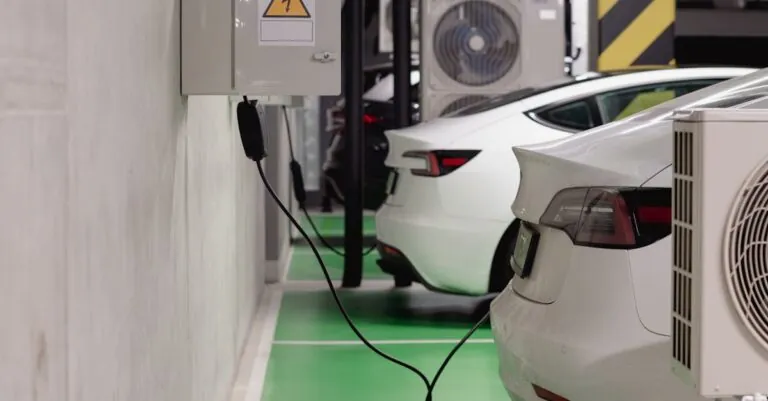In the world of 3D printing, choosing the right filament can feel like navigating a minefield of options. With a dizzying array of materials available, it’s easy for even seasoned makers to feel overwhelmed. Fear not! This guide will break down the essentials, helping you avoid the pitfalls of filament faux pas while ensuring your prints come out looking like a million bucks.
Table of Contents
ToggleOverview of 3D Printer Filaments
Numerous filaments exist for 3D printing, each offering unique properties for specific applications. PLA represents one of the most commonly used materials due to its ease of use and environmental friendliness. ABS, while durable and heat-resistant, requires higher temperatures during printing.
PETG excels at balancing strength and flexibility. Many hobbyists prefer it for its excellent layer adhesion and resistance to moisture. Nylon displays remarkable toughness, yet its absorption of moisture can complicate the printing process.
TPU stands out as a flexible filament suitable for creating soft parts. Items like phone cases and wearable components often utilize this material. Each filament requires specific temperature settings and printing conditions to achieve optimal results.
Printing speed influences the choice of filament significantly. Fast printing may produce better outcomes with materials designed for speed, while detailed models often benefit from slower printing speeds using filaments like ASA.
Surface finish varies across filament types. Some filaments, such as PLA, deliver smooth finishes, whereas others, like Nylon, might require sanding for refinement.
Understanding the properties of these materials aids in making informed choices. Considerations include printing temperature, layer adhesion, and application suitability. Researching each filament’s characteristics empowers users to select the most appropriate option for their needs.
Types of 3D Printer Filaments
Understanding the various types of 3D printer filaments is crucial for achieving desired results in printing projects. Each filament type has unique properties that cater to specific applications.
PLA Filament
PLA filament offers ease of use, making it ideal for beginners. This biodegradable material is derived from renewable resources, contributing to its eco-friendly reputation. Print temperatures for PLA typically range from 180°C to 220°C. Its low warping tendencies allow for good adhesion to build surfaces. While PLA provides a smooth finish, it may not withstand high temperatures. Common applications include prototypes, decorative items, and educational projects.
ABS Filament
ABS filament stands out for its durability and heat resistance. Effective for functional parts, it requires a print temperature of 220°C to 250°C. This material tends to emit fumes during printing, so proper ventilation is vital. ABS exhibits significant toughness, making it suitable for outdoor items and mechanical components. Post-processing options like sanding and acetone smoothing enhance surface quality. Users should note that ABS may warp, so using a heated bed is recommended.
PETG Filament
PETG filament combines strength and flexibility, appealing to hobbyists and professionals alike. Typical print temperatures range from 220°C to 250°C. This material offers good layer adhesion and low shrinkage, resulting in stable prints. PETG resists moisture and chemicals, making it ideal for containers and functional prototypes. The surface finish is generally smooth, although it may require careful cooling settings. Users often appreciate its balance between ease of use and performance.
TPU Filament
TPU filament presents a flexible option for applications requiring elasticity. Print temperatures usually fall between 200°C and 240°C. It adapts easily to various designs, ideal for creating soft parts like phone cases and gaskets. Despite its flexibility, TPU maintains a solid bond, contributing to durable prints. Users should consider slower print speeds for optimal results, as this helps maintain precision. The ability to bend and stretch makes TPU a popular choice for innovative projects.
Choosing the Right Filament
Selecting the right filament is essential for achieving optimal 3D printing results. Different materials, each with unique properties, cater to specific applications.
Considerations for Beginners
Beginners should primarily focus on PLA. This filament stands out due to its user-friendliness and minimal printing complications. Easy adhesion to build plates reduces the chances of warping. Printing temperatures typically range from 180°C to 220°C, making it accessible for most printers. Additionally, PLA emits a sweet, non-toxic odor, enhancing the printing experience. It’s also compostable, appealing to environmentally conscious users. Overall, starting with PLA encourages confidence and skill development in 3D printing.
Advanced Filament Selection Tips
Advanced users often consider factors like temperature tolerance and mechanical strength. ABS is popular for its durability, ideal for creating functional parts. Higher print temperatures, between 220°C and 250°C, are necessary to avoid issues like warping. PETG offers a balance of strength and flexibility, making it suitable for various applications. Users also appreciate its ease of printing under similar conditions, around 230°C. Exploring materials like Nylon can yield high-performance prints, though it demands careful handling due to moisture sensitivity. Ultimately, selecting the right filament hinges on the intended application and printer capabilities.
Storage and Maintenance of Filaments
Proper storage ensures 3D printer filaments maintain their quality and performance. Filaments should stay in a cool, dry environment to prevent moisture absorption. Humidity affects materials like Nylon and TPU, which can lead to printing issues.
Sealed containers or vacuum bags offer effective protection against moisture. Using silica gel packets within storage can help absorb any excess humidity. Filament spools stored away from direct sunlight minimize degradation caused by UV exposure.
Temperature regulation plays a crucial role as well. Maintaining storage temperatures between 15°C to 25°C preserves filament integrity. Keeping filaments away from heat sources prevents warping or softening of the material.
Regularly checking for signs of wear or dust on filament spools can enhance performance. Cleaning the extruder nozzle from any build-up also contributes to optimal results during printing.
Before printing, it’s advisable to let filaments acclimate to the printer’s environment. This step helps avoid curling or poor adhesion issues. For longer-lasting filaments, rotating stock encourages even usage, preventing any one spool from aging too quickly.
Conducting routine maintenance on printing equipment improves overall print quality. Regularly inspecting belts, nozzles, and heated beds ensures they function efficiently. This practice elevates both print accuracy and aesthetics while prolonging the lifespan of the printer and its components.
Conclusion
Choosing the right 3D printer filament is crucial for achieving successful prints. Each type of filament offers unique properties that cater to different needs and applications. By understanding these characteristics and adhering to proper storage and maintenance practices, users can maximize their printing potential.
Beginners should feel confident starting with PLA while advanced users can explore the durability of ABS or the versatility of PETG. With careful consideration of temperature settings and printing conditions, anyone can enhance their 3D printing experience. Embracing the right filament can lead to impressive results and a deeper appreciation for this innovative technology.




